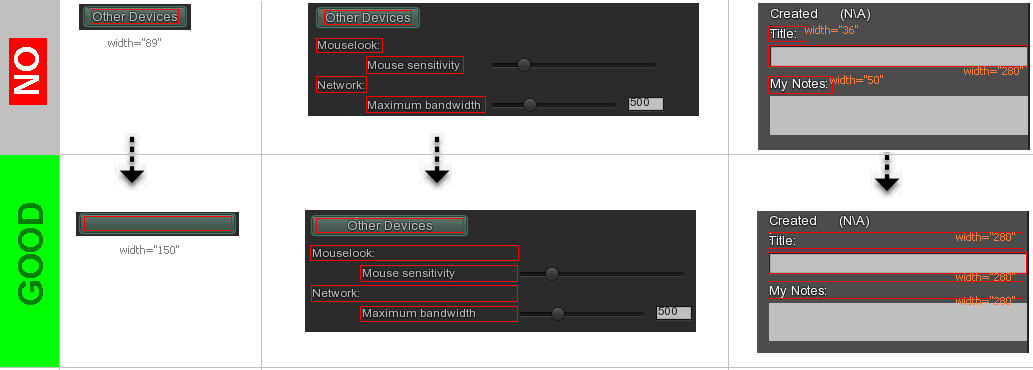User:Ramzi Linden/I18N Specifications
< User:Ramzi Linden
Jump to navigation
Jump to search
Revision as of 12:40, 19 August 2009 by Ramzi Linden (talk | contribs) (Created page with '=== Verbiage === # When writing a descriptor, or Help text, try to consider if your text has a subject + a verb. #* hypothetical: #** NOT SO GOOD: "Controls the angle that is re...')
Verbiage
- When writing a descriptor, or Help text, try to consider if your text has a subject + a verb.
- hypothetical:
- NOT SO GOOD: "Controls the angle that is reflected."
- BETTER: "Controls the angle that light is reflected.
- BETTER YET (for Help text): "The Surface Reflection Power Tool controls the angle that light is reflected from the water."
- hypothetical:
- New UI text follows the Viewer Style Guide:
- New UI text is highly localizable. The phrasing elimates geek-speak or robotic sentences in favor of conversational subject+verb sentences.
- UI text does not depend on slang or idiom that does not translate easily.
- New Help text is also highly localizable in the same manner.
Text and Layout
- All new text strings should be extracted from a /skins/default/xui folder that contains XML files encoded as UTF-8.
- New files use the existing standards of the Viewer's hierarchical-loaded localization architecture.
- The Viewer should be capable to ship multiple locales for any parent language, such as es-ES vs. es-MX
- Startup error messages, such as driver faults or wrong command parameters, are also internationalized in a similar manner.
- When text needs to be assembled from multiple parts (concatenation), it is done so in a way that can accommodate alternate word order and specialized formatting of non-text information.
- All GUI layout is wide enough to accommodate the reasonable text expansion of a foreign language. Generally, this means every widget can accommodate approximately 50% more space than is required by its English text, without the need for manual resizing.
- Whenever possible, window layouts put the widget below its label, instead of beside it. This allows a full line width for text expansion of the label.
- Multi-line text widgets are programmed to word-wrap.
- Programmatic word-wrap handles alternate international punctuation gracefully, such as a double-byte period 。, colon :, 「quotation marks」, (parenthesis) , ? , etc.
- The buttons in Dialogs and Toasts resize dynamically to accommodate text expansion. The largest button in a group of buttons may change in each locale.
- It is important to abstract in your head the width of the widget from the width of the text string. Foreign languages often result in longer strings to say the same thing.
- Whenever possible, plan on 1.5 * width of the string AS YOU SEE IT IN ENGLISH. (A set of examples is in the image below.)
- Flush-right the Help button (?).
